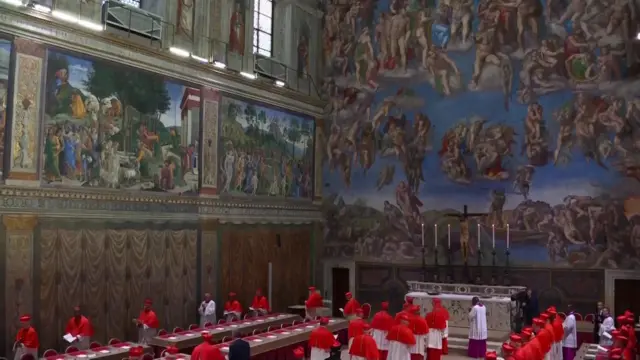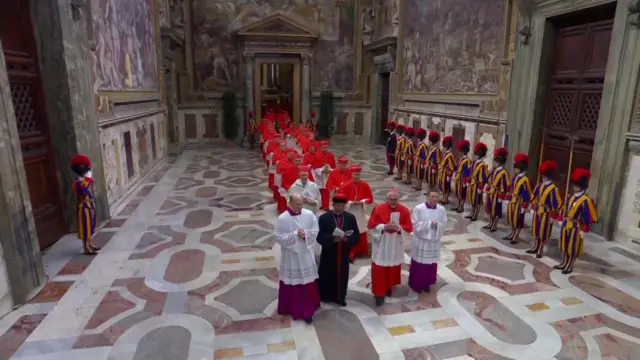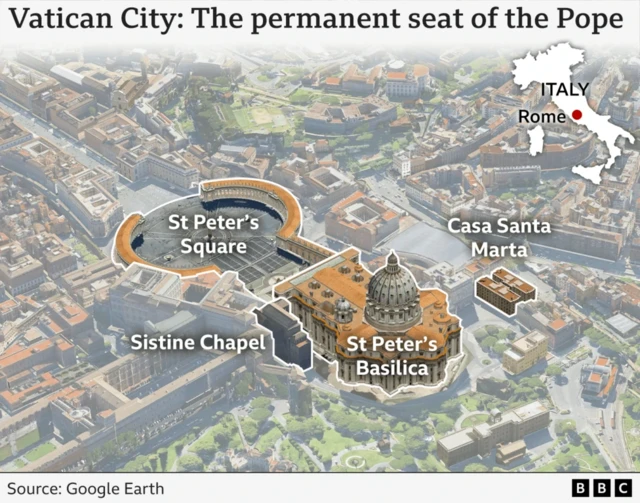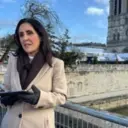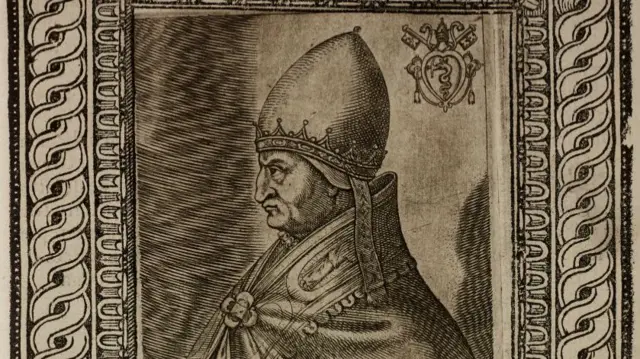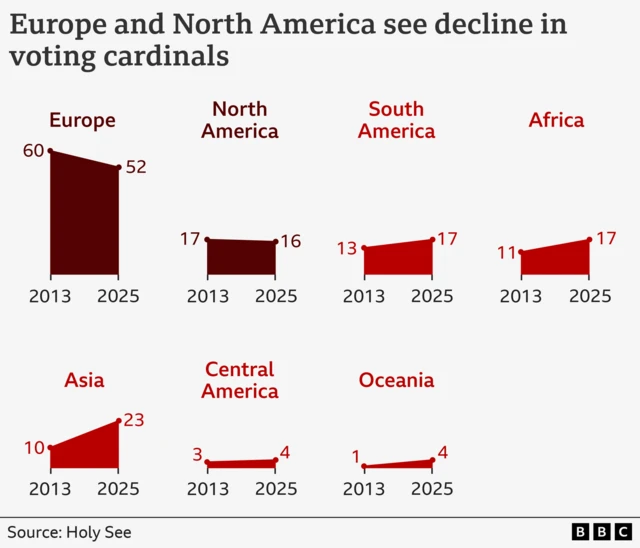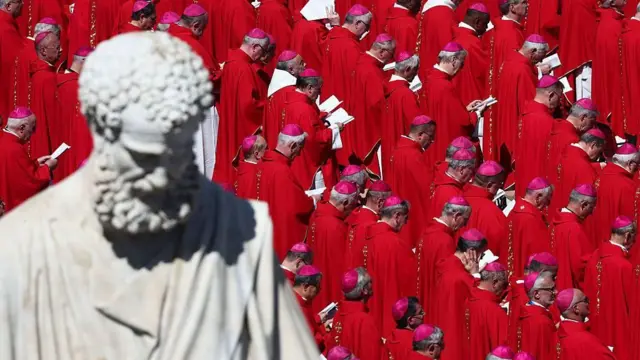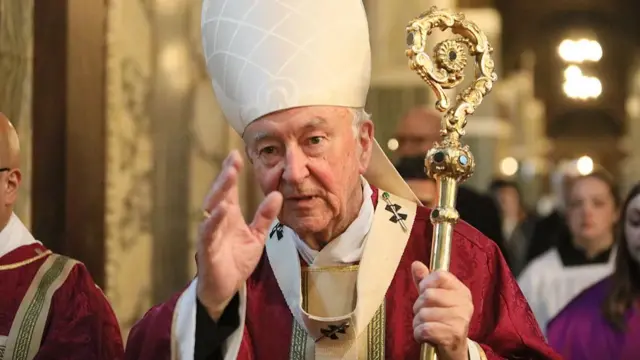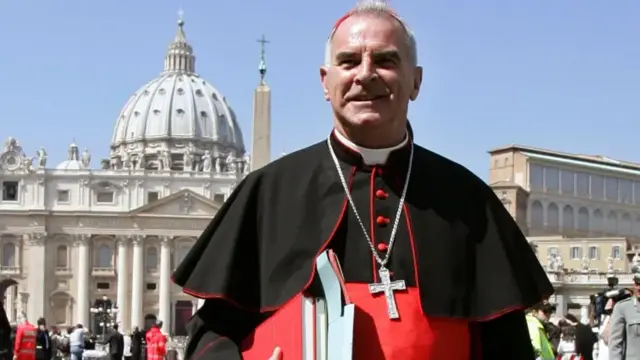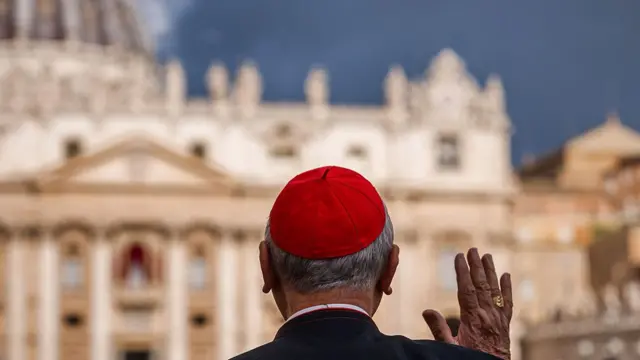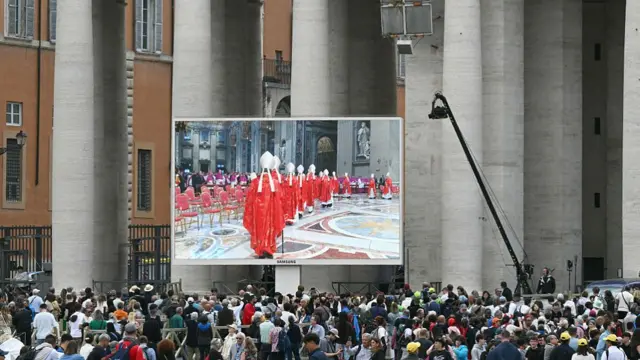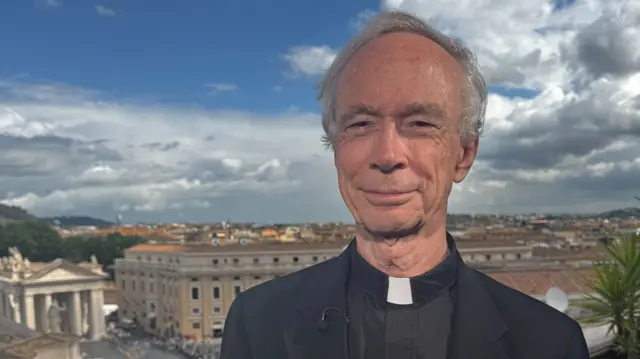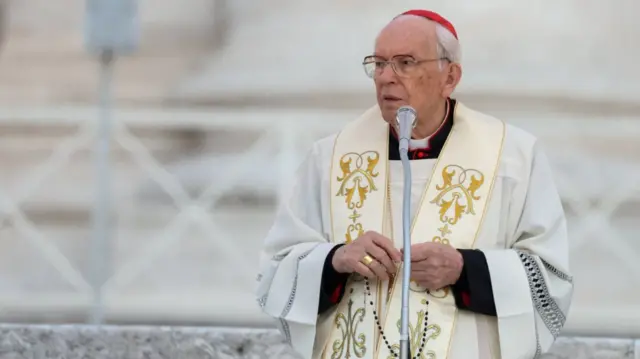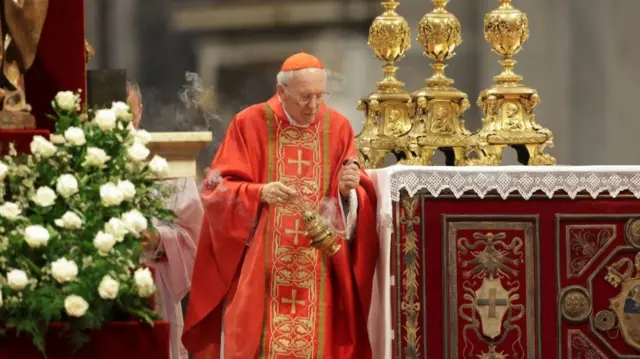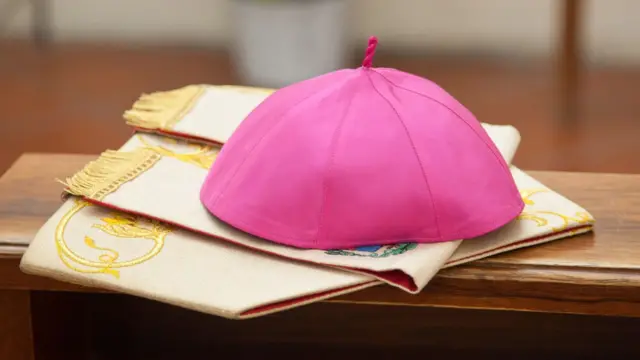No connection with the outside worldpublished at 16:06 BST 7 May
 Image source, Vatican Media / EPA
Image source, Vatican Media / EPAWe're still seeing images from inside the Sistine Chapel.
Once they are closed inside the chapel, the cardinals must have no communication with the outside world until a new pope is elected.
There is only one round of voting this afternoon, but the cardinals vote up to four times every day afterwards until a new pope is chosen, with a two-thirds majority required.
Each cardinal casts his vote on a simple card that says, in Latin: "I elect as Supreme Pontiff" to which they add the name of their chosen candidate.
They walk in line, in order of seniority, and place their cards inside the large silver and gilded urn.




